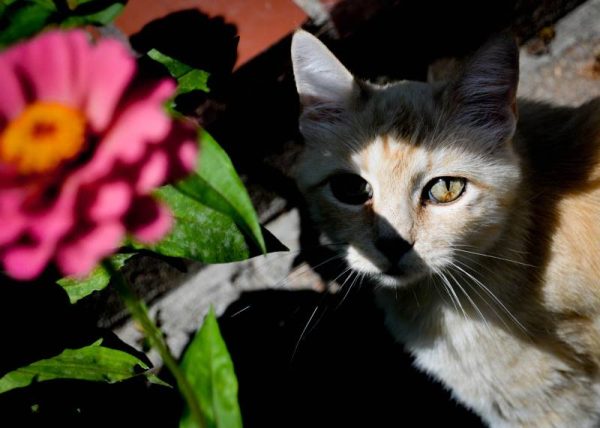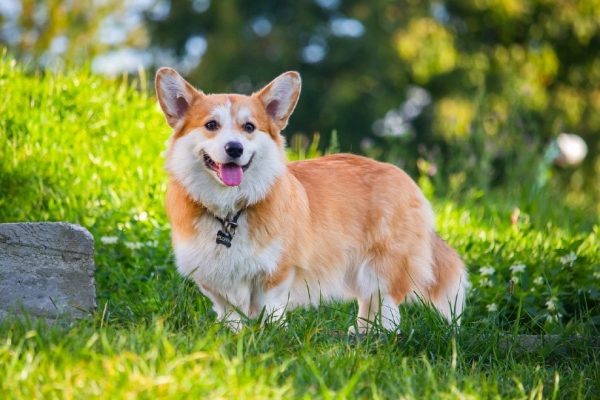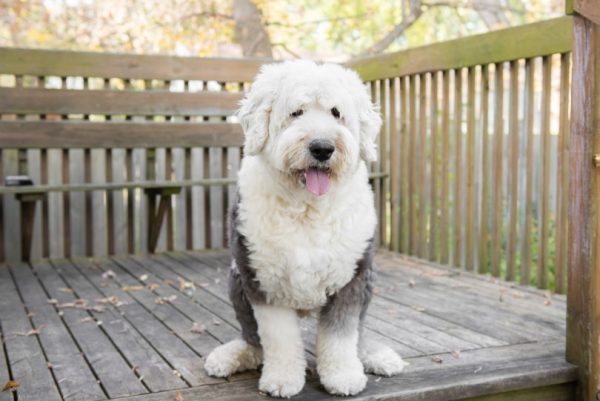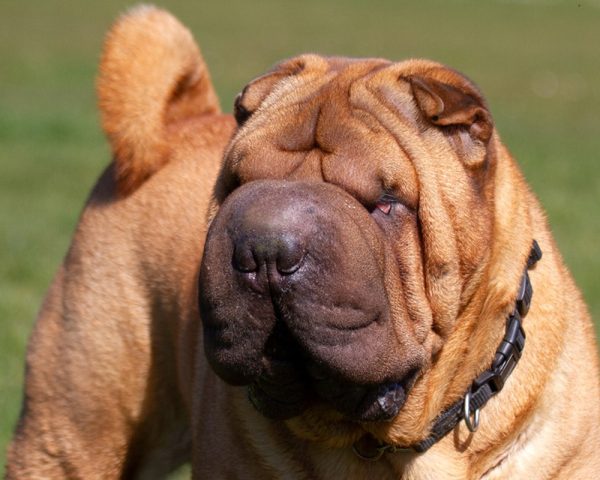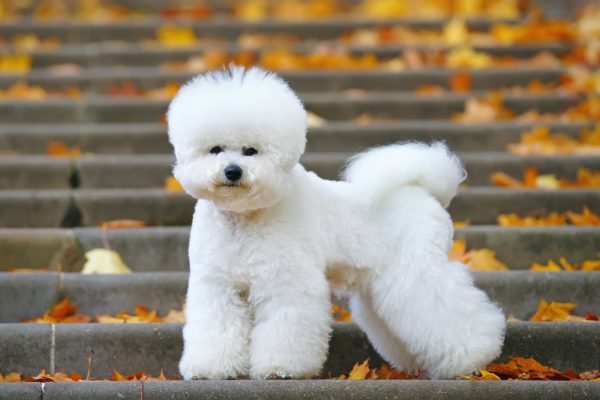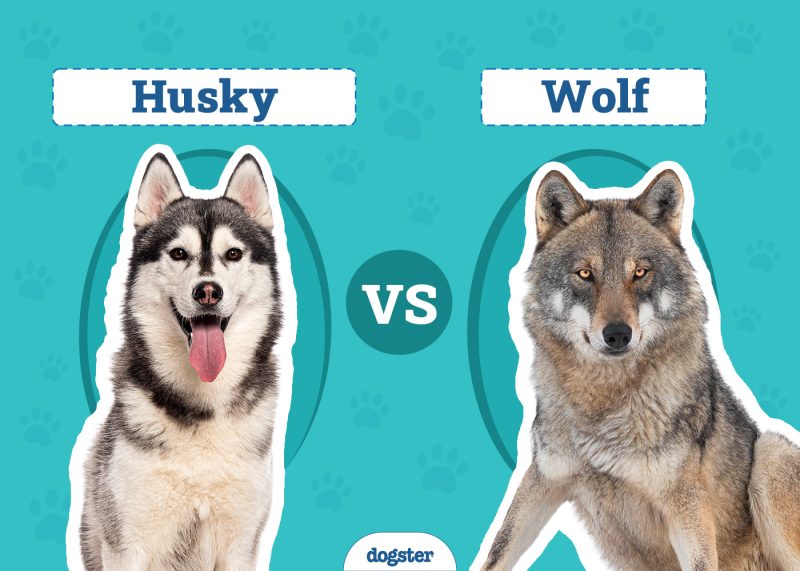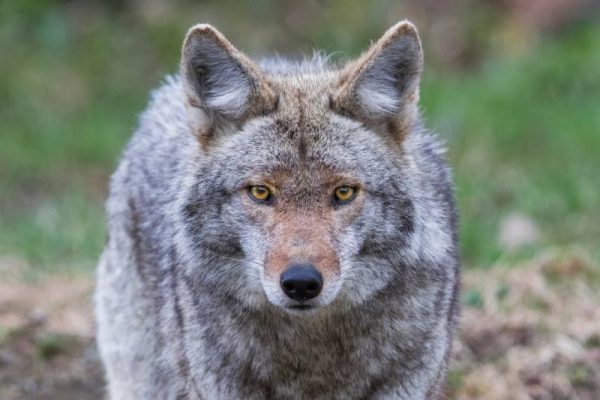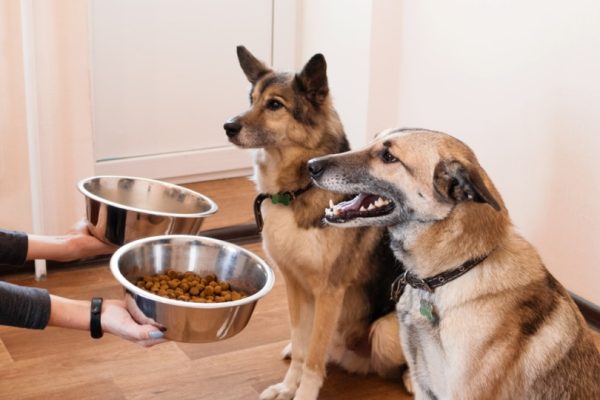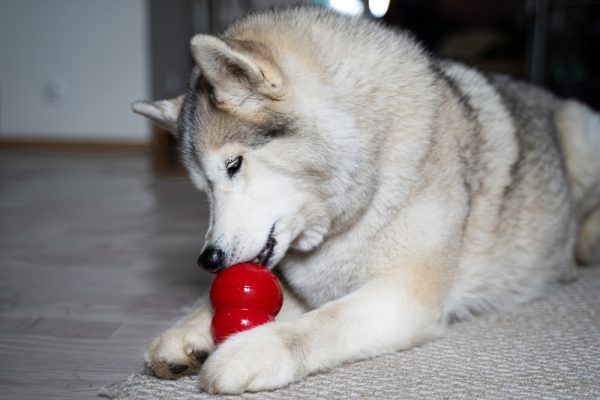In this article
View 3 More +Chow Chows and Pomeranians are stunning, fluffy dogs that look alike while they are puppies. Many people think that they also look similar as adults, and some even believe that they have similar personalities, which is not always the case.
One of the biggest differences between these two breeds is their size. Adult Pomeranians are significantly smaller than adult Chow Chows. Their temperaments are also quite different. Read on to learn more about their appearance, personality, temperament, health, and grooming needs, and determine which one might suit you and your family better.

Visual Differences

At a Glance
- Average height (adult): 18–22 inches
- Average weight (adult): 44–71 pounds
- Lifespan: 9–15 years
- Exercise: 1+ hours a day
- Grooming needs: High
- Family-friendly: Somewhat
- Other pet-friendly: No
- Trainability: Food-driven, stubborn
- Average height (adult): 8–11 inches
- Average weight (adult): 4–7.7 pounds
- Lifespan: 12–16 years
- Exercise: Less than 1 hour a day
- Grooming needs: Moderate
- Family-friendly: Yes
- Other pet-friendly: Somewhat
- Trainability: Intelligent, love to please their owners, slightly stubborn

Chow Chow Overview
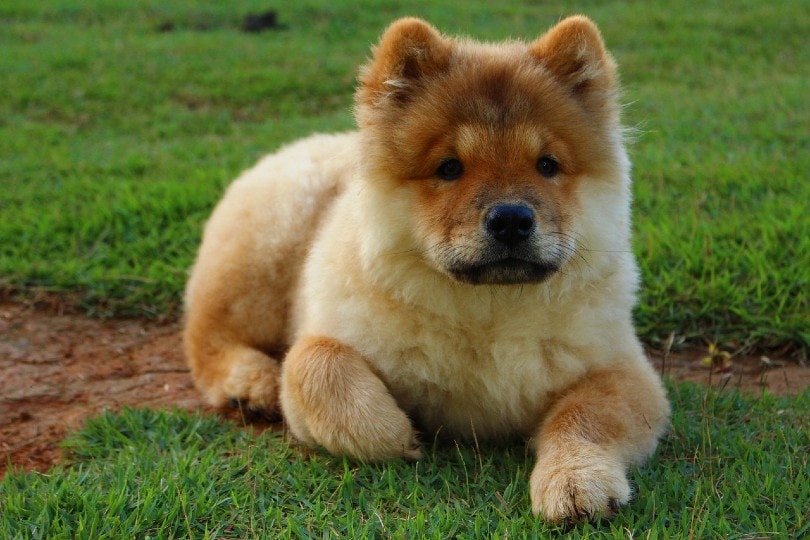
The Chow Chow is native to ancient China and is on the AKC’s list of the 14 most ancient recognized dog breeds1. They have been popular throughout history. They came to England around the 1700s and started spreading worldwide during the 1800s2. By the 1900s, Chow Chows were so popular that the AKC recognized them in 1903.
Nowadays, many people keep Chow Chows because they are loving, caring, and protective. They can be great companions for the right owners, but you should know more about them before determining if they fit you and your lifestyle.
Appearance
Chow Chows are large dogs, typically between 18 and 22 inches high, and weigh between 44 and 71 pounds during adulthood. They have medium-long double coats and resemble little lions due to their facial features and the fur around their heads.
There are various color combinations of Chow Chows, and the most common are cream, cinnamon, black, red, and blue.
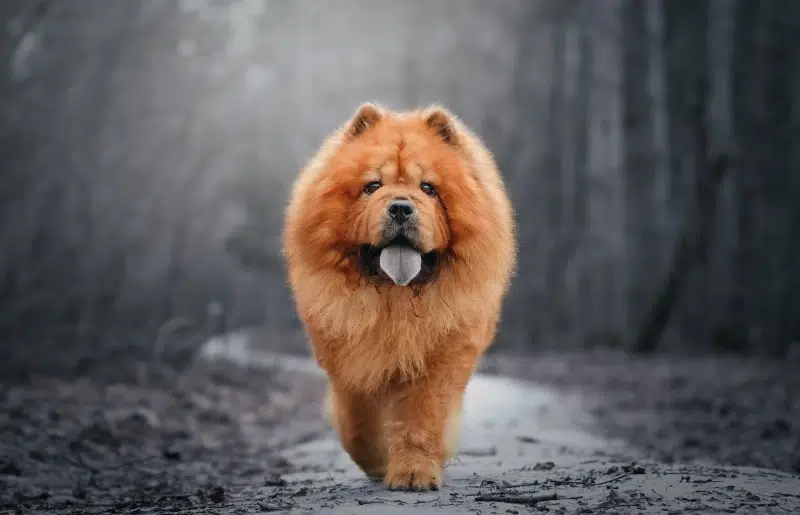
Personality & Temperament
Chow Chows are incredibly loyal to their owners and were primarily guard dogs throughout history. Due to their protective nature, they can be particularly wary of strangers, which is why they need socialization from a young age. Chow Chows are not usually very playful but need daily exercise and activity to stay in good shape.
They often show off their stubborn, independent nature and may rebel against fearful owners. If you familiarize Chow Chows with other animals from a young age, they can tolerate smaller pets. However, since they have loyal personalities and are devoted to their owners, they may develop separation anxiety. Therefore, they need a family with someone always at home to care for them.
Health
Chow Chows are generally healthy dogs with long lifespans, between 9 and 15 years. However, like most purebred dogs, Chow Chows are prone to several health conditions common for their breed3:
- Gastric dilatation volvulus
- Cruciate ligament disease
- Elbow dysplasia
- Hip dysplasia
- Entropion
- Hypothyroidism
Before getting a Chow Chow, familiarize yourself with these conditions.
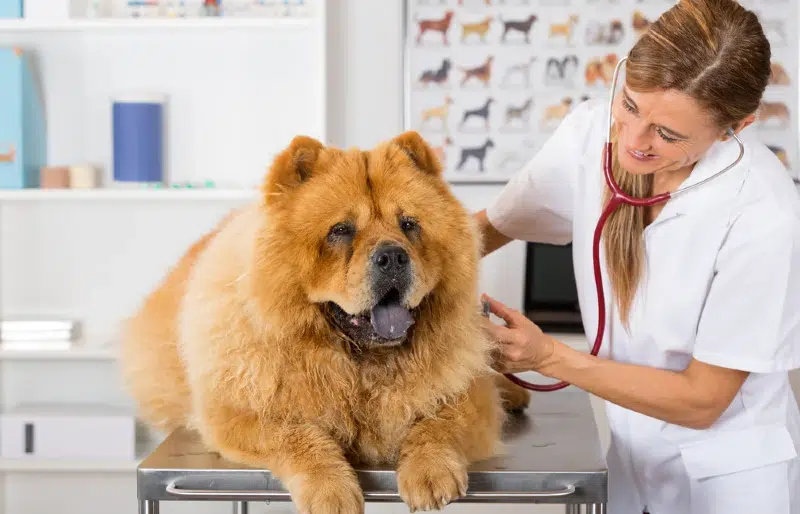
Exercise
Chow Chows aren’t overly energetic but need to spend plenty of time outside. To ensure that your Chow Chow grows healthy and strong, it’s best to provide them with at least 1 hour of exercise daily. You can divide the time into one or two walks and include play time to bond with your canine.
Since Chow Chows are large dogs, they need a significant amount of space, which is why homes with fenced-in backyards are ideal for them to train and explore. They can get bored quickly, so provide them with various outside games and puzzles to keep them active and entertained.
Training
Chow Chows have a guarding nature, so they’re wary of strangers, which is why they need socialization from a young age to learn how to behave around people, kids, and other pets. They require owners that know how to be strong leaders, as Chow Chows tend to be stubborn and independent.
It’s best to start training Chow Chows when they’re around 8 weeks old and practice positive reinforcement during training sessions. They also need behavioral and obedience training. People unfamiliar with dog training should consider hiring a professional. The lessons they learn in their younger years will influence how they act for the rest of their life, so it’s vital to teach them “good manners.”
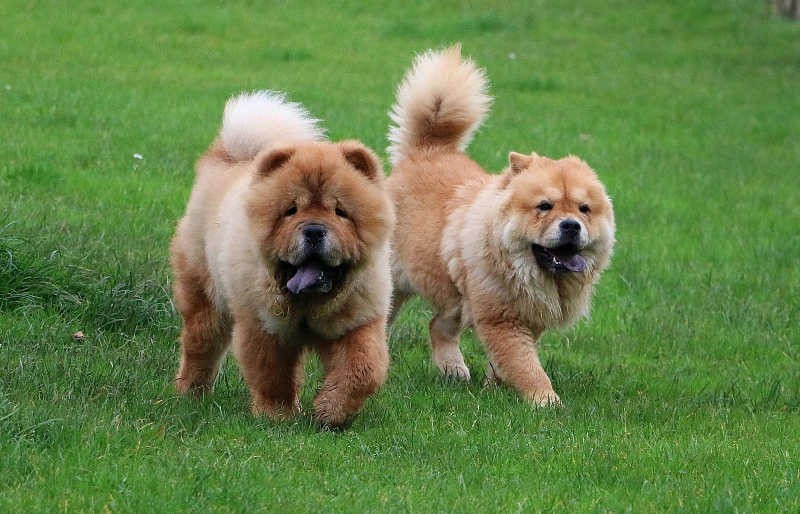
Grooming Needs
Chow Chows have high grooming needs because they have medium-length, double coats that require daily brushing. They can have two types of coats: rough and smooth. They shed throughout the year, and their shedding peak is during fall and spring, so they’re not the best option for people looking for a breed that doesn’t shed much.
Another thing to remember about Chow Chow grooming is cleaning their folds; they are beneath their fur, and you should regularly check them and keep them clean to prevent infections.
Suitable for:
Chow Chows are loving, caring, and protective. They develop a strong connection with their owners and can be wary of strangers, which is something to keep in mind before getting one as a pet. Chow Chows are usually somewhat active but not very playful, so they may not be the best choice for families with kids.
However, they can suffer from separation anxiety and need someone to be with them constantly, so they make great pets for couples and small households. Due to their size, they are unsuitable for apartments and need homes with yards where they will have enough space.
- Protective and loving nature
- Calm and alert
- Typically well-behaved
- Loyal
- Can be good tolerate smaller pets with training
- Great for people with homes that have outside space
- Above-average shedding
- High maintenance
- Not that playful
- Stubborn and overly independent
- May develop separation anxiety
- Not suitable for people living in apartments
- Prone to certain health problems

Pomeranian Overview
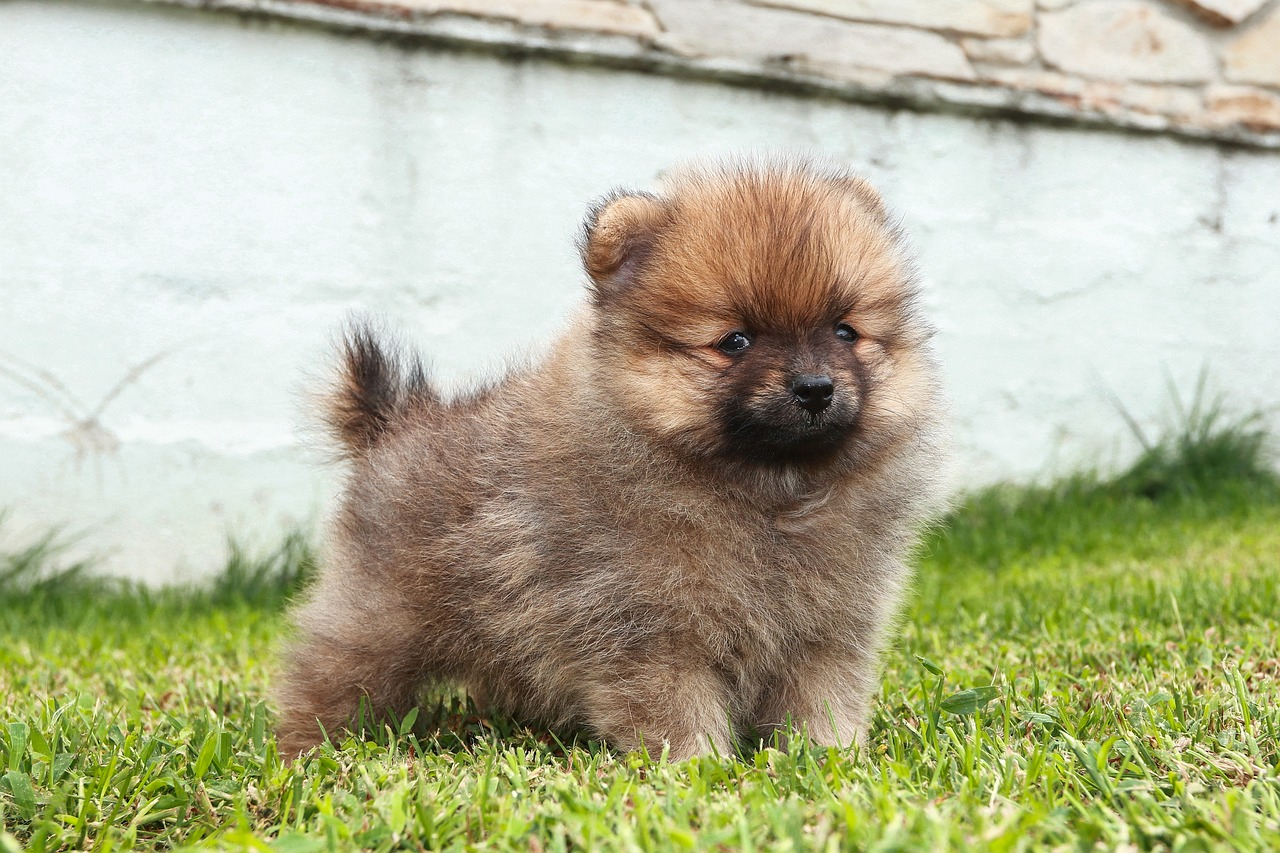
The Pomeranian is a purebred toy breed from Pomerania, a part of Europe between Poland and Germany. They come from ancient Spitz-type dogs and are the smallest out of all Spitz breeds. Pomeranian puppies became extremely popular during Queen Victoria’s rule. She fell in love with this breed during her trip to Italy.
After that, they spread across the world and became a recognized breed by the Kennel Club in England in the 1870s. The AKC recognized the breed in 1888. By the 1930s, Pomeranians were among the most popular dogs in the U.S.A.
Nowadays, many people pick Pomeranians as their pets because of their small size and affectionate personality. They make great companions for people looking for an active dog that can adjust to living in an apartment.
Appearance
Pomeranians are small, which is why they’re considered a toy breed. Adult Pomeranians typically weigh around 4–7.7 pounds and are between 8 and 11 inches tall. They have fluffy, long double coats, slightly foxy faces, and pricked-up ears. They look adorable due to their fluffy fur, which can come in various color combinations and have distinctive markings, such as:
- Blue
- Black
- Black and tan
- Blue merle
- Red
- Chocolate
- Chocolate and tan
- Orange
- Red
- Brindle
- White
- Tri-colored
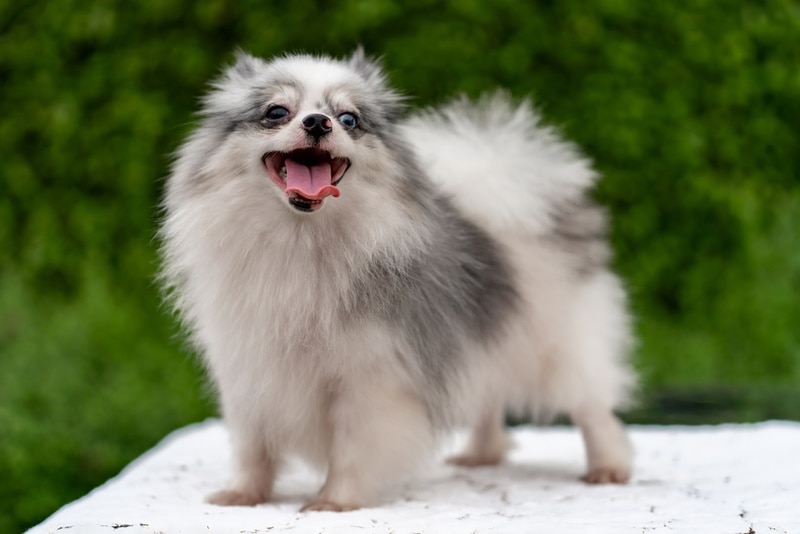
Personality & Temperament
Pomeranians are fun-loving, energetic dogs that bring a bubbly spirit into your home. They are generally friendly and affectionate and love being around people. They are also slightly stubborn and intelligent, learn quickly, and love to please their owner. However, they can act aggressively toward other dogs and strangers due to “small dog syndrome.”
This is a behavioral issue that can occur in small dogs, in which they tend to be aggressive to others to prove themselves and show off. Although Pomeranians are prone to such behavior, with proper training and a loving and caring owner, they can learn how to be social and behave well.
Poms have a protective nature and may bark frequently unless they get adequate training. Due to their nature, they are great for families with older kids who can help care for the dog.
Health
Pomeranians are relatively hardy dogs with a lifespan of 12–16 years. Although generally healthy, they are more prone to specific breed-related health conditions than many other dogs.
Common health conditions that can occur in Pomeranians are:
- Hypothyroidism
- Elbow dysplasia
- Hydrocephalus
- Luxating patella
- Tracheal collapse
- Cataracts
- Entropion
- Cushing syndrome
Since suffering from these conditions is possible in Pomeranians, you should familiarize yourself with them before deciding to get a Pomeranian puppy.

Exercise
Although Pomeranians are small dogs, they need daily exercise, usually less than 1 hour a day (preferably 30 minutes), though the precise time will depend on your dog’s energy levels. It’s best to incorporate exercise into your Pomeranian’s schedule through regular walks and playtime. Two daily walks and a few play sessions will keep them fit and happy.
Training
Pomeranians are extremely intelligent and quick learners, but they can show their stubborn, sassy side during training. Therefore, you should approach Pomeranian training through positive reinforcement while showing your dog that you’re the leader. The main goal of training is to help your Pomeranian learn how to behave while being confident, which will lower the chance of aggression toward other people and unfamiliar animals.
Pomeranians typically need socialization, potty training, obedience, and barking training from a young age to learn how to behave in adulthood.
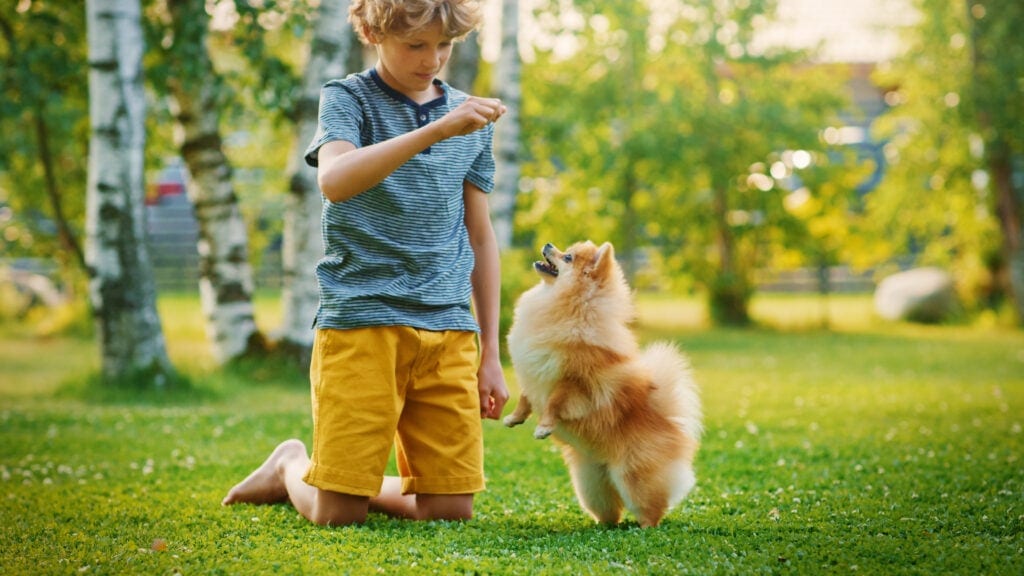
Grooming Needs
Pomeranians have moderate grooming needs. Although their coat is long and fluffy, it only requires weekly brushing, which makes Pomeranians easier to care for than Chow Chows. Their coats shed more during spring and fall, which is when their maintenance needs may slightly increase to daily brushings.
Besides that, Poms need their nails regularly trimmed, and you should clean their ears as needed. You’ll also need to check the hair around their butt to ensure that there are no hygiene problems.
Suitable for:
Pomeranians are bubbly and fun-loving, making them great for all types of people and households looking for a low-maintenance companion. They fit in well with adults and other pets and can be a good choice for families with older kids.
Due to their size and nature, they are perfect for people living in apartments and small homes.
- Affectionate and loving
- Protective
- Moderately shedding
- Intelligent
- Great for apartments
- May bark too much
- Prone to small dog syndrome
- Sassy and stubborn
- Prone to certain health problems

Which Breed Is Right for You?
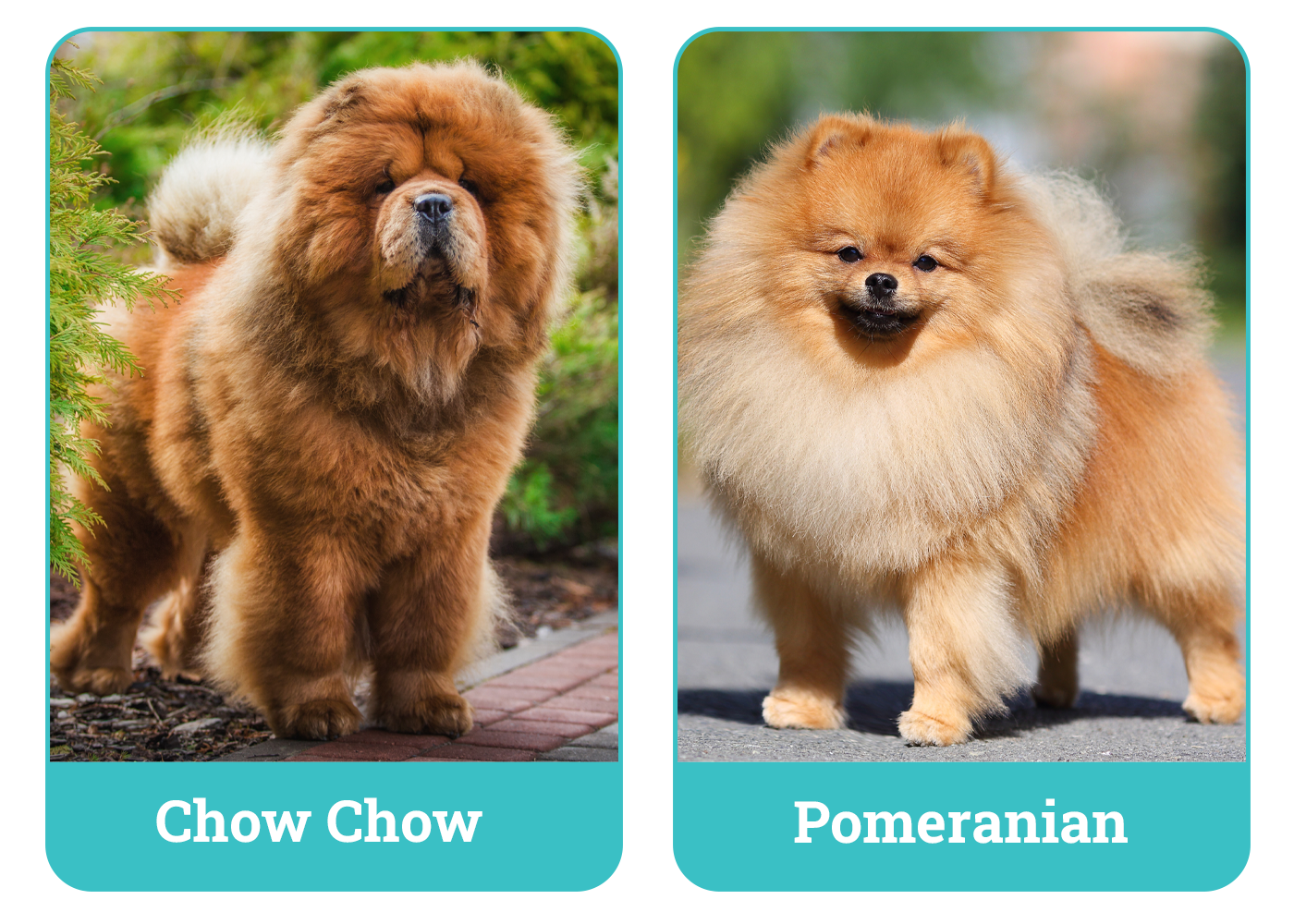
If you’re considering getting a Chow Chow or a Pomeranian, you’re probably wondering which breed is ideal. Generally, both are great for people who want dogs that don’t require much exercise and are moderately active. Due to their size, Chow Chows are more suitable for people living in homes with plenty of outdoor space, while small Pomeranians fit better into apartment lifestyles.
As for their personalities, Pomeranians are slightly more playful and affectionate, which is why they’re an excellent choice for families with older kids. Conversely, Chow Chows are affectionate but fit much better with small families or even single-member households.
Remember that both breeds are loving and caring, and either could become your future best friend. Before choosing between a Chow Chow and a Pomeranian, consider all their traits, compare them with your family’s wants and needs, and determine which breed is most suitable!
Related Read:
- Papillon vs Pomeranian: What’s the Difference? (With Pictures)
- American Eskimo vs Pomeranian: Main Differences & Similarities
Featured Image Credit: Top – Chow Chow (Luke Thornton, Unsplash) | Bottom – Pomeranian (Anna Gorina, Shutterstock)


